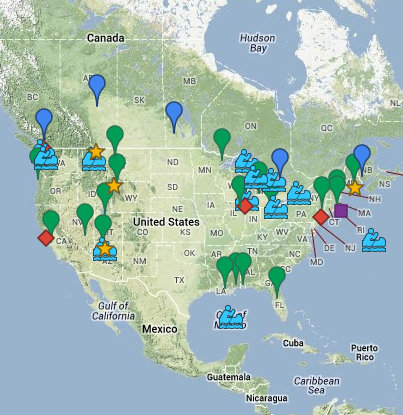The next two posts visit a couple of the most popular tourist spots on the north Antrim Coast - the Carrick-a-Rede (Carrickarade) Rope Bridge and the Giant's Causeway. I'll say a little more about each on the other blog, too, maybe with more emphasis on the tourists than the geology (hshipman).
Carrick-a-Rede is a small rocky island connected to a larger small rocky island (Ireland) by a wire rope bridge. Originally, the bridge (earlier versions) allowed fishermen to access their boats which they pulled up on one side of the island. Now the main function of the bridge is to allow something like a couple hundred thousand tourists to go back and forth every year and to raise money for the National Trust (a good thing). According to Wikipedia, the salmon fisherman don't use the bridge anymore because there aren't many salmon left - sounds like a familiar problem.
The small island is a volcanic plug - more Paleogene volcanics as the modern Atlantic began to open. But it's emplaced amidst older sediments - chalks and limestone, seen in the nearby cliffs. The cliff exposures were heavily shaded, but apparently these rocks are combined with ash and capture the more violent eruptive activity associated with this period (I read this stuff, I don't necessarily figure it out for myself).







No comments:
Post a Comment